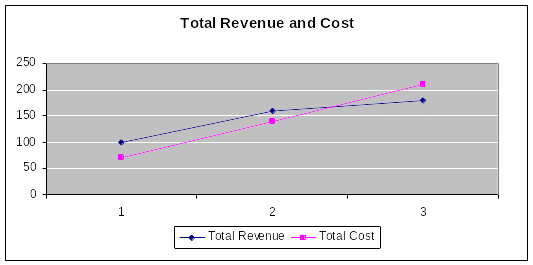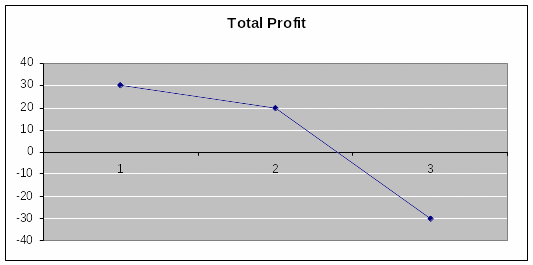Brooke, Grant and Melanie are three friends deciding how they will celebrate the New Year TOGETHER. Brooke prefers to go on a cruise, is happy to go to Fiji, but does not want to go to Brisbane. Grant prefers to go to Brisbane, is happy to go to Fiji, but does not want to go on a cruise. Melanie prefers to go to Fiji or to take a cruise but does not want to go Brisbane.
If all three are rational, how will they celebrate the New Year? Explain
In order to illustrate the problem, table 1 can be proposed. There, 0 indicates the lack of desire to spend the time this way; 1 indicates that the person is ready to spend the time this way; 2 indicates that the person prefers this kind of vacation.
Table 1. The willingness of the friends to go to a place/cruise.
As can be seen from the table 1, one person is not willing to go on a cruise, and two people do not want to go to Brisbane. At the same time, they are ready to go to Fiji, and Melanie prefers going there. According to Mankiw, economists assume that reasonable people “systematically and purposefully do the best they can to achieve their objectives, given the available opportunities” (6). In the described situation, the opportunity exists for all the friends to enjoy their vacation together if they go to Fiji. In other words, if they are rational, they are going to choose Fiji: in this case, neither of them is spending the vacation the way they would rather not spend it. This is the optimal, satisfying decision (Baumol and Blinder 42).
Identify each person’s opportunity cost of their final decision
Opportunity cost is “whatever must be given up to obtain some item” (Mankiw 54). We do not know if the friends are going to give up anything except for the other vacation opportunity, which is why this is the only aspect we are going to consider. The table 1 shows that Brooke and Grant give up the opportunities of the vacation they would prefer for the sake of spending the holiday together with their friends. Melanie, on the other hand, gets the chance to go to the preferred place and spend the time with her friends. As a result, Melanie’s opportunity cost is nonexistent.
The owner of a small bakery can invest in one of two projects. Each project costs $1000. The first project will result in a 2% savings on the bakeries $100,000 wages bill. The second project with reduce the bakery’s advertising bill by 15%. How much does the bakery’s advertising bill need to be to make it the better investment? Explain.
The initial investment of both opportunities is identical, which means that their profitability depends on the resulting savings. The savings of the first project amount to 2% of $100,000, which equals $2,000 for a certain period of time. Therefore, unless 15% of the advertising bill for the same period of time exceed $2,000, the first project will be considered more profitable. $2,000 is the 15% of $13,333.3. If the advertising bill equals $13334, the savings gained through the second project will amount to $2,000.1. Therefore, if the advertising bill equals or exceeds $13334, the second project is a more logical decision.
The table below shows the amount of crayfish production given the number of hours spent fishing. The fisher can sell each crayfish for $20. Each hour of fishing costs $70. How many hours will the fisher fish to earn as much profit as possible? Explain.
Table 2. The Fisherman’s problem. Complete with calculation data.
From the problem and table 2, it is apparent that the number of fish that the fisherman manages to catch is decreasing with time, and the costs of fishing do not. As a result, the fisherman can only profit if he works for one hour. The situation can also be illustrated with the help of graphs. The fig. 1 shows the growth of total revenue and total costs, and the maximum profit appears at the point where the vertical difference between the two lines is the greatest, which happens during the first hour (Baumol and Blinder 158). Also, fig. 2 shows the decrease in the total profit.


Suppose you have just won $100 in a lottery. You have a choice between two alternatives:
- use it to buy a new shirt that costs $100, but are willing to pay $107;
- put the money in a bank for one year and earn 10% interest.
What is the opportunity cost of spending the money now to buy the shirt?
Since I am willing to pay $107 for the shirt that costs only $100, the immediate purchase will result in $7 consumer surplus (Mankiw 161). At the same time, if I put the money in the bank, I will receive $10 (10% of $100) as interest. I can either “have” the shirt ($100) and the surplus of $7 now or $110 a year later without any shirt. I find it difficult to compare the psychological customer surplus of $7 and the actual $10, which means that when compared to the present money, the opportunity cost of buying the shirt is $10 (Baumol and Blinder 41, 225).
However, with the customer surplus taken into account, it is reduced to $3. Since the customer surplus is going to influence the final decision, it should be considered (Mankiw 161). In any case, buying the shirt is the less attractive option from the financial point of view.
Works Cited
Baumol, William J, and Alan S Blinder. Microeconomics. 13th ed. Boston, Massachusetts: Cengage Learning, 2015. Print.
Mankiw, N. Gregory. Principles of Economics. 7th ed. Boston, Massachusetts: Cengage Learning, 2014. Print.